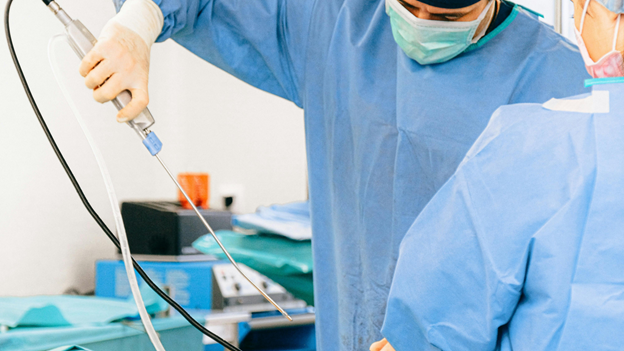Embarking on the journey of laparoscopic hernia recovery involves knowing what to expect and how to prepare effectively. This guide seeks to demystify the process and offer insights to individuals considering or undergoing this procedure in India. With an eye on the best practices from experts and experiences from patients, understanding recovery time post-laparoscopy becomes less daunting. Here’s a closer look at what you need to know.
Introduction to Laparoscopic Hernia Surgery and its Role in Modern Treatments
Laparoscopy is a type of surgery that uses smaller cuts and a camera. For people in India needing hernia surgery, this brings smaller scars and faster healing compared to old methods. The camera helps surgeons do the job right, lowering infection risk and speeding up recovery.
Big leaps in surgical technology have reshaped hernia surgeries today. Many Indian hospitals now lean towards laparoscopic techniques because of better imaging and tools. This shift weakens the hold of open surgeries, welcoming an era with shorter hospital stays and lesser pain after surgery.
The move towards laparoscopic hernia surgery is massive. Patients like this option for its major wins. These are less pain after surgery, fewer scars, and quicker return to normal life. With more doctors choosing laparoscopy, people now have options and can look forward to a smoother recovery.
Journey from Surgery to Recovery: Key Stages and Expectations
The recovery journey after laparoscopy starts with a key phase. During the first 24-48 hours, you’ll likely stay in the hospital. Here, you’ll get care while your body begins the healing process. After this, the next week is usually spent resting at home.

During this initial week, you may notice swelling and soreness. Feeling tired and sore in the area is normal. Your doctor might suggest mild pain relief and cold packs. Gentle stretching can also aid mobility and alleviate stiffness.
Knowing what activities are safe during recovery is essential. Light walking is recommended during the first days of recovery. It’s important to move gently and avoid lifting heavy objects. As weeks go by, gradually increase your activity level. At around six weeks, returning to regular activities becomes possible, but always consult your surgeon before starting exercise routines.
Diet and Nutrition: Supporting Faster Recovery
Post-surgery, a well-rounded diet speeds up healing. Protein is critical because it helps rebuild tissues. Enjoy meals with lean meats, beans, and eggs regularly. Include fresh fruits and veggies for essential vitamins and minerals to boost your immunity.
Hydration is vital in your recovery process, ensuring everything works smoothly. Drinking enough water guards your system against constipation troubles. Balance is important; thus, keeping nutrients well-rounded and varied is wise.
Constipation often follows surgery; combat this by eating lots of fiber. Choose whole grains, fruits, and veggies for better bowel movements. Don’t forget, drink enough to support digestion, and lightly exercise, like easy walks.
Top Tips to Enhance Recovery and Avoid Complications
Effective recovery involves practicing some key activities for better health. Breathing exercises can enhance comfort by boosting your oxygen levels efficiently. Engaging in light, everyday activities helps to prevent lasting stiffness, which plays an important part in overall recovery.
Even though recovery is usually smooth, it is essential to watch for potential complications. Pay close attention to any worrying changes like unusual pain or redness. Swelling or fever should also be promptly reported to a doctor without delay.
It is important to keep talking openly with your surgeon for best results. Regular medical check-ups can help catch issues before they become bigger problems. Making sure you attend follow-up visits is crucial for tracking your healing process closely.
Testimonials & Real-life Stories: Insights from Successful Recoveries
Ramesh felt a little sore but focused on walking daily. “Each step encouraged the next,” he says, showing how activity aids recovery. His doctor advised gentle laparoscopy hernia recovery exercises, like walking and stretching, to heal faster.
Anita talks about keeping a diet balance after surgery helped her heal. “I drank water regularly and ate small meals often,” she shares, suggesting plans for post-surgery laparoscopy hernia care.
Kiran drew strength from stories and tips about post-laparoscopy hernia experiences. “Knowing others went through this comforted me,” explains Kiran, who then felt ready and calm.
Wondering what to expect after hernia surgery? Get personalized recovery guidance and expert post-op care at SARU HOSP. Schedule your follow-up now!

